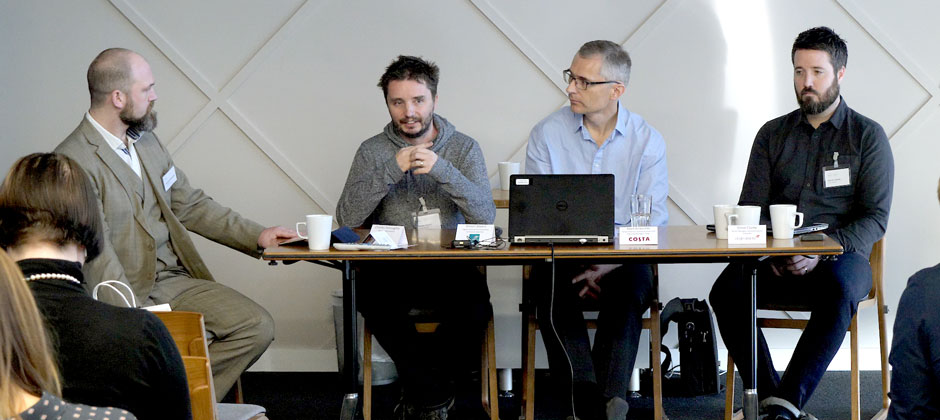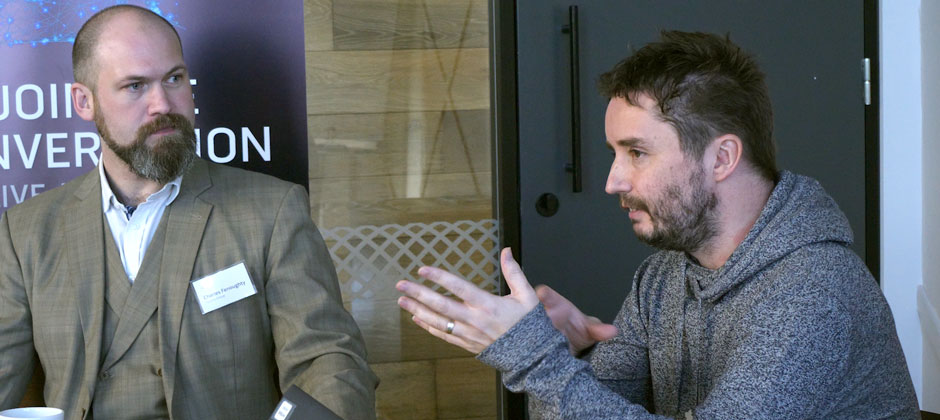We know IT teams love it, and we know it comes with a mind-bogglingly abundant range of tools, but as communicators, how do we get our heads around how Microsoft Office 365 can engage with colleagues and give them the best experience at work?
Internal communicators from companies without it, thinking about it and early adopters were all ears on Thursday 1 February as three guest speakers shared what they’d learned about taking on, or even taking over, an O365 platform.

After a rapid-fire ‘10-in-10’ overview of the coolest things about O365 from Charles Fenoughty, Sequel’s Digital Media Director, the speakers shared their different experiences.
One thing they all agreed on was that if you just throw in the technology without thinking about the culture of your company, you’re setting yourself up to fail.
“We have a very diverse culture and lots of divisions,” says Simon Steers from Legal & General. “From investment bankers to people in hoodies and trainers, they all have different needs. It’s important to find out what those needs are before you even start.”
Mark Bickerdike from Costa, the biggest coffeehouse chain in the UK, knows that his audience of mainly baristas are social-media savvy: “We have over 2,200 stores in the UK&I staffed by permanent and part time young people, and no way to communicate directly with them. What we need is a way to regain control of the message and encourage feedback.
“O365 is a great opportunity for us to develop the right tools to deliver two-way communication in a format that works for them.”
Steve Clarke from Virgin Atlantic saw O365 as the ideal way to connect a remote workforce of customer-facing colleagues through company-issued mobile devices.
“O365 was bought as a cure for our fading Outlook system, but once IT had done their bit no one knew what do with it.
“It was my job to see how we could make better use of it, especially as 70 per cent of our workforce has very limited computer access.”
Steve took advantage of O365’s flexibility to create a mobile-first intranet that offered the functionality expected by today’s digitally-enabled workforce, as well as a great desktop experience.
“We customised SharePoint Publishing because it has lots of flexibility. We added features to the home page such as Teams, quick links to internal and external apps, social and messaging functions, as well as a rolling news feed.
“Yammer, which comes with the suite, wasn’t working for us, so we integrated Workplace by Facebook, including its private messaging app which provides the WhatsApp experience our colleagues are used to, only better.”
Now employees have a one-stop shop for everything they need, from forms and rosters to news and conversation through a single, secure interface, without having to spend time searching or logging into different systems. And they can like, comment and share what they see there too.
If yours is a more formal corporate structure like Legal and General, you may want to tread carefully at first, advises Simon.
“Look at introducing the tools with the most immediate benefit rather than switching on everything at once and turning the platform into a free-for-all playground. Having a precisely defined set of tools makes it easier to describe and people can get their heads around it more easily.”
This approach also means it’s easier to influence user behaviour by directing them to the features you want them to use regularly, before introducing more functions and fully digitalising your workplace.
And although having a single system for intranet, apps, broadcasting, messaging and collaborating means data governance is controllable, Simon recommends getting the security team involved to avoid accidental leakage of sensitive information.
“As a financial institution, security is very important to us. Initially we had some challenges with information being in the cloud and potentially being shared externally, so it was vital to engage our security and IT teams at a very early stage to understand any restrictions and how to overcome them.”


